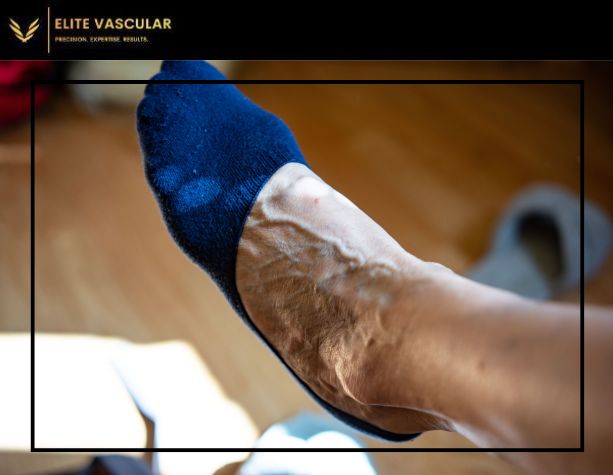- admin
- 0 Comments
Introduction
VenaSeal is an innovative varicose veins treatment that seals the affected veins using a special medical adhesive. Though it has many advantages, it is important to be aware of its possible side effects and how to handle them properly. This article explains VenaSeal’s side effects, how they can be identified and what steps are needed for their appropriate management.
What is VenaSeal?
This involves sealing varicose veins with a medical adhesive designed by FDA as a minimally invasive procedure. The catheter-delivered adhesive causes the vein to close and reroutes blood into healthier vessels. It offers a faster recovery period compared to thermal ablation or surgery and less post-procedural pain.
Common Side Effects of VenaSeal
Allergic Reactions
Although rare, allergic reactions may occur due to adhesives. Signs could include redness, pruritus, swelling and rash at the site of treatment among other things. If not treated immediately patients might get hives or lose breath due to serious cases.
Phlebitis
A very common side effect is phlebitis which is inflammation of the vein itself. Pain, redness and swelling along the treated vein will indicate this condition. Over-the-counter painkillers as well as anti-inflammatory drugs are usually helpful in mitigating this condition that tends to be mild in nature.
Bruising and Discoloration
The insertion point for the catheter or any other part along the treated vein may develop bruises or discoloration on the skin. These happenings are transient; they take about two weeks then fade off naturally after some time has passed since they started. The victim also needs cold compresses while keeping their area elevated so as to minimize bruising. Nerve Pain
Finally, there may be temporary nerve pain following treatment or tingling sensation of an operated area of patients’ bodies. The use of painkillers from the pharmacies and bed rest can relieve it.
Hyperpigmentation
Over time, the treated veins may result in darkening of the skin; however, this is not likely to last for long. This side effect usually goes away on its own with topical treatments alone.
Less Common Side Effects
Deep Vein Thrombosis (DVT)
In very rare cases, there could be deep vein thrombosis (DVT) where a blood clot forms in a deep vein. In such situations swelling, pain and reddening will occur significantly on the affected leg. For instance, DVT requires immediate medical attention to prevent complications like pulmonary embolism.
Infection
This happens when an infection occurs at the site where catheter was inserted which is not common. Signs and symptoms of infection include redness around this area that is characterized by warm feeling accompanied by fever and swelling. With prompt medical treatment these infections can be dealt with effectively.
Adhesive Migration
The practitioner’s skill level combined with adherence to correct procedure minimizes adhesive migration which results into complications in very rare cases.
Recognizing Side Effects
Immediate Symptoms
Immediate symptoms should be acted upon before they deteriorate further as they may include severe pain or stiffness and difficulties in breathing or sudden appearance of reddened or hot areas around the treated area. Such signs could indicate serious problems like allergy, DVT or even infection.
Delayed Symptoms
Even persistent discomforts like continued ache or numbness require monitoring due to delayed effects. Although many adverse reactions are self-limiting, persistent ones warrant referral by a healthcare provider.
Managing VenaSeal Side Effects
Over-the-Counter Medications
Mild pain, inflammation, or bruising can be relived through over-the-counter medications that contain ibuprofen or acetaminophen among others. Observe proper dosage according to instructions provided and consult your healthcare specialist if necessary.
Topical Treatments
Hydrocortisone creams and skin lightening agents are possible choices for some minor allergic reactions including hyperpigmentation. However, consult a dermatologist before beginning any new topical treatment.
Cold Compresses
Use of cold compresses on the affected area can assist in the reduction of swelling as well as bruising. Use a clean towel immersed in cold water or a cold gel pack that is covered by a towel and applies it for ten to fifteen minutes several times during the day.
Elevating the Legs
In case an individual has swelling, he should put his legs up at a height above the level of his heart for 15-20 minutes severally throughout the day. This helps reduce swelling and improves blood flow.
Compression Stockings
Although VenaSeal generally does not require post-operative compression stockings, your doctor may recommend them in order to help manage any swelling and support healing where necessary.
Seeking Medical Advice
For any concerning symptoms or side effects that do not improve with home care, seek medical advice promptly. Your physician can tailor specific recommendations and treatments to address your unique concerns.
Preventing Complications
Choose an Experienced Practitioner
It is important to choose a highly experienced practitioner who has performed VenaSeal procedures before. Check their credentials and patients’ reviews to make sure you are under good hands.
Discuss Your Medical History
Let your healthcare provider know everything about your medical history. Some illnesses or drugs could increase complications risk which should be considered by your provider.
Follow Pre- and Post-Procedure Instructions
It is essential that one adheres to pre-and post procedural instructions given by the treating doctor. In addition, this includes guidelines as regards medication use, activity levels, wound care etc., which will help ensure swift recovery.
Conclusion
However effective VenaSeal could be when it comes to treating varicose veins effectively without major surgery, there are possible side effects that need attention. Gets early symptoms awareness following guidance from healthcare provider on how best this would lessen related risks and guarantee smooth recovery process. Odd or severe symptoms should therefore always prompt one into getting professional medical help for the best results.
